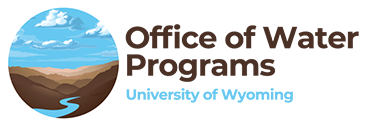Current WRP Projects: Project 65
Quantifying nitrogen sources in a headwater catchment from stable isotopes of nitrate: Proof of concept and case study at Brooks Lake, Fremont County, Wyoming
- Project Number: 65
- PIs: Felix Bredoire, David Williams and Sarah Collins, UW College of Agriculture, Life Sciences and Natural Resources; Janet Dewey, UW College of Engineering and Physical Sciences; Chandelle McDonald, UW Office of Research and Economic Development; Lindsay Patterson, Ron Steg and Mike Wachtendonk, Wyoming Department of Environmental Quality
- Period: July 2024 - June 2026
Abstract:
Poor water quality related to excessive nutrient loading stimulates harmful cyanobacterial blooms (HCBs) which has adverse health effects for humans and animals, including livestock, wildlife and pets. Increasing public awareness has resulted in the rise of HCB advisories in the past few years in Wyoming. To address those issues, the Wyoming Department of Environmental Quality (WDEQ), the Wyoming Game and Fish Department (WGFD), and the US Forest Service (USFS), are investigating the causes of abnormally high primary productivity (including HCBs) of lakes, reservoirs, and streams from a diversity of contexts. One major difficulty usually encountered is the identification and the quantification of sources of nutrients, including nitrogen (N) and phosphorus (P), that trigger reduced water quality. We propose to develop and test a stable isotope approach focused on nitrate as a source fingerprinting tool and employ statistical modeling to assess the relative contribution of N sources. Our group of faculty, research scientists, and technical experts at the University of Wyoming (UW) will collaborate with the WDEQ to strengthen their ongoing investigation at Brooks Lake, a high-elevation lake near Togwotee Pass that regularly has excessive primary productivity affecting fish stocks. We will measure stable isotopes of nitrate (δ15N, δ18O, and Δ17O) from the lake and its water inputs and develop mixing models to evaluate the relative contribution of each source to the lake nitrate. Nitrate is a major component of the N cycle that is readily taken up by organisms fueling excess primary productivity in N-poor aquatic ecosystems. Nitrate in Brooks Lake may come from atmospheric deposition in the form of rain and snow, organic matter decomposition in surrounding natural soils, lake internal N cycling, wastewater release from a nearby lodge, or waste from domesticated animals. Quantifying how each of these sources contribute to the lake will help the WDEQ develop efficient management solutions for Brooks Lake. This project will serve as a proof-of-concept for the WDEQ in their consideration of how to employ stable isotope analyses of nitrate in broader monitoring efforts of surface waters.

